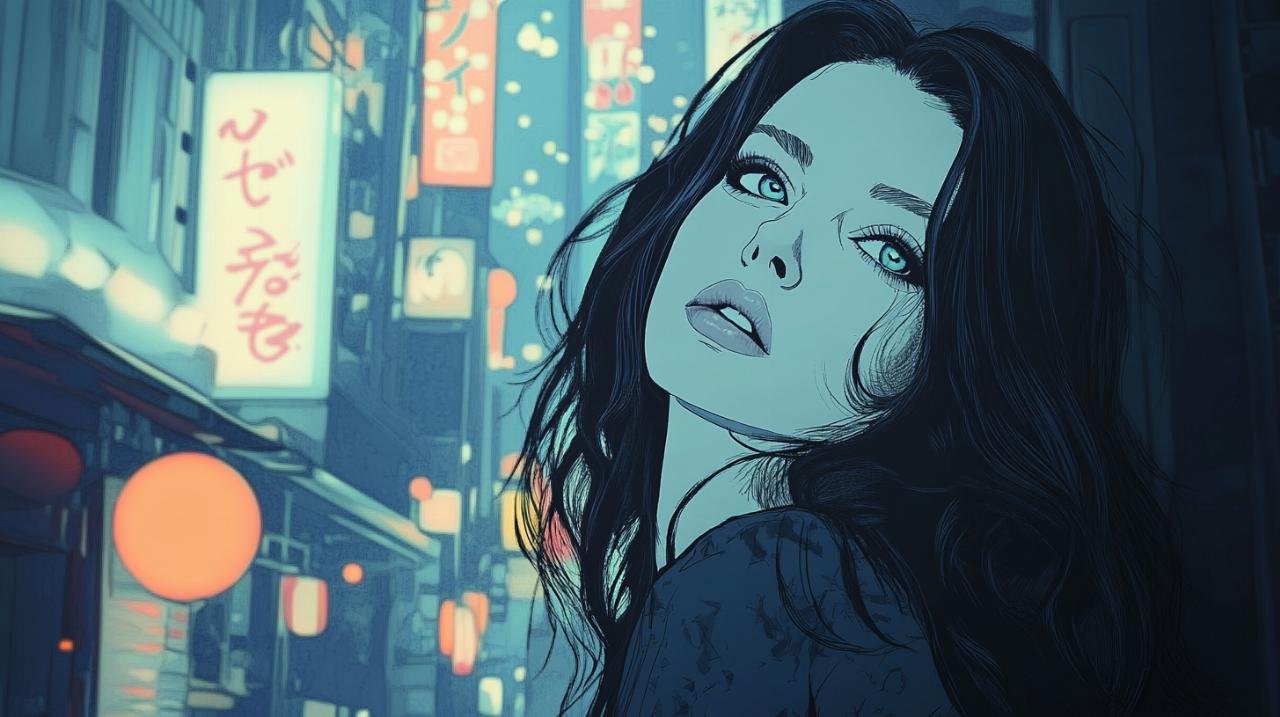Lana Del Rey has become one of the most enigmatic and celebrated figures in contemporary music, captivating audiences worldwide with her distinctive blend of melancholy melodies and vintage aesthetics. Her rise to prominence is as much a story of artistic vision as it is a tale of strategic reinvention, a journey that has sparked endless debates about authenticity and identity in the modern entertainment landscape. From her early days as an aspiring singer-songwriter to her current status as a cultural icon, Lana Del Rey’s evolution offers a fascinating glimpse into the mechanics of fame and the power of carefully crafted narratives. As fans and critics alike continue to dissect her body of work, one cannot help but reflect on how this artist has managed to sustain such widespread appeal across multiple continents and demographics, all while maintaining an air of mystery that only heightens her allure.
The evolution of lana del rey’s artistic identity
From Lizzy Grant to Lana Del Rey: Reinventing a Musical Persona
Before the world knew her as Lana Del Rey, Elizabeth Woolridge Grant was simply Lizzy Grant, an aspiring musician whose debut album in 2008 earned a modest ten thousand quid and failed to make a significant impact on the music scene. Born on 21st June 1985 in New York City, she began her music career in 2005 with a sound rooted in indie and folk traditions. However, this initial artistic direction did not resonate with audiences, prompting a dramatic shift in both sound and image. The transformation was not merely cosmetic; it represented a fundamental reimagining of her musical persona. By October 2011, she had adopted the stage name Lana Del Rey and uploaded the hauntingly beautiful track Video Games to YouTube, a move that would change the trajectory of her career forever. The song’s vintage aesthetic and cinematic quality captivated viewers, amassing twenty million views and heralding the arrival of a new kind of pop star.
This reinvention was meticulously crafted, blending elements of mid-20th century American culture with the rebellious spirit of 1960s and 1970s counterculture. Her retro style became instantly recognisable, characterised by glamorous yet melancholic visuals that evoked a sense of nostalgia for an era many of her fans had never experienced firsthand. The strategic use of social media platforms allowed her to control the narrative surrounding her image, building a devoted fanbase before she even signed with major labels such as Polydor Records and Interscope. Yet, this deliberate transformation was not without controversy. Many were keen to learn how lana del rey hid her privileged background, particularly the financial backing provided by her father, Rob Grant, a successful investor. Critics argued that her narrative of hardship and struggle was misleading, given her access to resources that most aspiring artists could only dream of. She countered these claims by insisting that she had relied on scholarships and faced genuine obstacles, but the debate over her authenticity persisted, becoming a defining aspect of her public persona.
Musical maturity and genre-blending throughout her discography
The release of Born to Die on 31st January 2012 marked a pivotal moment in Lana Del Rey’s career. The debut album was highly anticipated, with strong pre-sales that saw it reach Amazon’s top twenty-five in the United States. Her music videos for Video Games and Blue Jeans had already generated millions of views, setting the stage for commercial success. Yet, her appearance on Saturday Night Live drew harsh criticism from both critics and celebrities, with some questioning her vocal abilities and stage presence. Rumours of collagen injections further fuelled the narrative that her image was artificially constructed, though she vehemently denied such claims. Despite the initial backlash, Born to Die went on to achieve widespread acclaim, establishing her as a major artist of her generation.
Over the years, Lana Del Rey has continued to evolve, releasing a series of critically acclaimed albums that showcase her willingness to experiment with different genres and themes. Ultraviolence, released in 2014, leaned into darker, more rock-influenced sounds, while Honeymoon in 2015 offered a dreamy, cinematic experience. Lust for Life in 2017 introduced a more hopeful tone, and Norman Fucking Rockwell! in 2019 solidified her reputation as a serious artist, earning her widespread praise and multiple Grammy nominations. Her music is often described as dark, romantic, and dreamy, with lyrical themes centred on love, loss, and nostalgia. The vintage, glamorous, and cinematic quality of her visuals has become a hallmark of her brand, creating a cohesive artistic identity that resonates deeply with her audience. Her ability to blend commercial appeal with artistic integrity has made her a standout figure in the digital age, demonstrating that success need not come at the expense of creative vision.
The building blocks of her worldwide success
Cinematic Aesthetics and Nostalgic Americana in Her Brand
One of the most compelling aspects of Lana Del Rey’s appeal is her ability to evoke a sense of nostalgia for a bygone era, even among listeners who have no personal connection to the past she references. Her cinematic aesthetics draw heavily on vintage Americana, incorporating imagery and themes from mid-century Hollywood, classic road trips, and the glamorous yet troubled lives of icons from that era. This carefully curated visual and sonic identity has become synonymous with her name, setting her apart from her contemporaries. Her music videos, album covers, and live performances all contribute to a cohesive narrative that transports audiences to a different time and place, offering an escape from the mundanity of everyday life.
This nostalgic approach is not merely a stylistic choice; it is a strategic element of her brand that has proven immensely effective in building a global fanbase. By tapping into universal feelings of longing and romanticism, she has created an emotional connection with her audience that transcends geographical and cultural boundaries. Her ability to maintain this aesthetic while also addressing contemporary issues and personal experiences has allowed her to remain relevant in an ever-changing musical landscape. Whether she is performing at major events such as Coachella, where her set overran by thirteen minutes resulting in a twenty-eight thousand dollar fine, or making a surprise appearance with Fastest Kids in School in Santa Barbara, her presence is always marked by a distinctive blend of glamour and authenticity that keeps fans coming back for more.

Strategic Use of Social Media and Viral Moments in Establishing Her Fanbase
The role of social media in Lana Del Rey’s rise to fame cannot be overstated. Her decision to upload Video Games to YouTube in October 2011 was a masterstroke that allowed her to bypass traditional gatekeepers and connect directly with potential fans. This approach enabled her to build a substantial following before securing a record deal, giving her leverage in an industry that often prioritises commercial viability over artistic vision. Her Instagram account, which now boasts over twenty-two million followers, serves as a platform for her to share glimpses of her life, promote her work, and engage with her audience on her own terms. With a high engagement rate and consistent follower growth, she has demonstrated an understanding of the digital landscape that many of her peers struggle to match.
However, this reliance on social media has also made her vulnerable to scrutiny and criticism. The very platforms that allowed her to control her narrative have also exposed her to intense public examination, with every post and appearance analysed for hidden meanings or inconsistencies. The debate over her authenticity, particularly regarding her privileged background, has been amplified by the transparency that social media demands. Yet, she has used these platforms to directly address her critics, sharing her side of the story and attempting to reframe the conversation around her identity. Her ability to navigate this complex terrain speaks to a broader trend in the entertainment industry, where artists are expected to maintain a constant online presence while also preserving a sense of mystery and allure.
Lana Del Rey’s career has been punctuated by a series of viral moments and high-profile appearances that have kept her in the public eye. From her controversial Saturday Night Live performance to her recent appearance at the 2025 Met Gala, where she wore alligator hair clips as a nod to her husband, Louisiana swamp tour guide Jeremy Dufrene, she has consistently generated headlines. Her participation in events such as Neil Young’s Harvest Moon charity concert on 25th October 2025, and her debut at Paris Fashion Week alongside Jeremy, have further cemented her status as a cultural icon. Her 2025 UK and Ireland summer stadium tour, which included a performance at Liverpool’s Anfield in June, demonstrated her enduring popularity and ability to draw large crowds. With a new album, now called Stove, expected in 2026 and featuring country influences, she shows no signs of slowing down.
Her story ultimately reflects broader questions about authenticity in the digital age, where the line between real and artificial is increasingly blurred. While some may view her transformation from Lizzy Grant to Lana Del Rey as a calculated act of deception, others see it as a testament to the power of reinvention and the importance of storytelling in art. Her ability to create genuine emotional connections through consistent narratives, regardless of their origins, suggests that authenticity is not a fixed quality but rather a dynamic process shaped by both the artist and the audience. As she continues to evolve and push the boundaries of her craft, Lana Del Rey remains a compelling figure whose influence on contemporary music and culture is undeniable.

